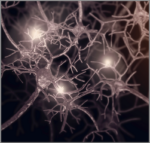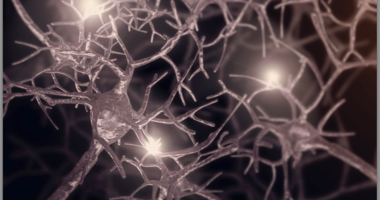Mutation Affecting Myelin Protein May Raise Parkinson’s Risk

A specific genetic variant, or mutation, that is associated with an increased risk of developing amyotrophic lateral sclerosis (ALS) may also raise a person’s risk of Parkinson’s disease, a study reported.
Shared features of both these neurodegenerative disorders include causative processes and “genetic backgrounds,” the researchers noted, suggesting that a mutation affecting key nerve cells might also be a common characteristic.
Their study, “Myelin-associated oligodendrocyte basic protein polymorphism as a risk factor for Parkinson’s disease,” was published in Acta Neurologica Scandinavica.
The exact biological processes that lead to the degeneration of neurons (nerve cells) in Parkinson’s are not completely understood, but both environmental and genetic factors are thought to play a role. Specifically, mutations in at least 20 genes have been identified as drivers of the disease.
While Parkinson’s is characterized by the death and dysfunction of dopaminergic neurons in the brain, evidence supports a group of nerve cells called oligodendrocytes having an important role in mechanisms that underlie the disease.
Oligodendrocytes are highly specialized nerve cells that produce myelin — the fatty substance that wraps around nerve cell endings (axons) to protect them — in the central nervous system (CNS, the brain and spinal cord).
Recently, a mutation in the myelin-associated oligodendrocyte basic protein (MOBP) gene was proposed to be a genetic risk factor for ALS. This gene is responsible for a similarly named protein — MOBP — also located in the CNS and a product of oligodendrocytes.
Given the known and suspected shared features of ALS and Parkinson’s — including that of oligodendrocytes; both disorders “are characterized by degenerated neurons with long axonal projections,” the researchers wrote — a team in Greece investigated whether the mutation in the MOBP gene linked with ALS might also associate with Parkinson’s.
“MOBP is a protein produced by oligodendrocytes and is the third most abundant protein component of CNS myelin,” the study noted. “It is mainly thought to maintain myelin integrity.”
Researchers analyzed the DNA of 358 Parkinson’s patients, with a mean age of 68, and 358 age- and sex-matched healthy people of Greek ancestry, serving as controls.
DNA is composed of four nucleotides, or building blocks, set in a specific order, that make up our genes. These are called adenine (A), cytosine (C), guanine (G), and thymine (T).
The genetic variant under study, rs616147, results from a single nucleotide polymorphism, or a single nucleotide that is altered within this particular place of the gene. Rs616147 can present with either a G or an A nucleotide at its site within the MOBP gene. Given that people have two MOBP genes, one inherited from each parent, the possible combinations are G/G, G/A, or A/A.
Researchers found the A nucleotide to be present in 37% of Parkinson’s patients, and in 31% of controls. The frequency of combinations were G/G, found in 55% of patients and 46% of controls; G/A, found in 35% of patients and 44% of controls; and A/A in 10% of patients and 9% of controls.
Based upon statistical analysis, a significant association was seen between the MOBP rs616147 variant (among the different genetic combinations) and Parkinson’s.
“In this case-control study, we provide preliminary indication for an association of MOBP rs616147″ and Parkinson’s, possibly for a first time, the researchers wrote.
Given the increased presence of the G/G combination in patients and that of the G/A variant in healthy controls, they suggested that the G/G variant may increase susceptibility to Parkinson’s, while the G/A variant may be protective against the disease.
To validate their results, the researchers then analyzed the DNA of 327 Alzheimer’s patients, and found no association between the rs616147 variant and this disease.
Other studies into people with multiple system atrophy, a disease with known association to alpha-synuclein — the protein whose toxic accumulation underlies the development of Parkinson’s — also found no association with the MOBP protein, indicating that alpha-synuclein may work independently of MOBP.
While these findings provide “preliminary results associating MOBP rs616147 genetic variant with PD [Parkinson’s],” further studies are necessary “to conclude whether specific variants of MOBP gene may eventually be considered specific markers of neurodegenerative diseases in general,” the researchers concluded.







